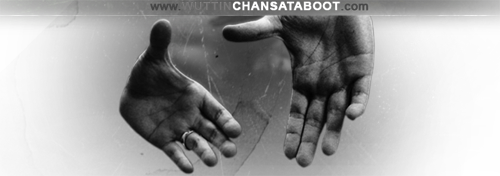
OVERVIEW :
“Cross-Words”, a multi-media installation by Wuttin Chansataboot, is an art project selected via “Open Call” section of the 8th Nakanojo Biennale, an international art festival held in Nakanojo, an area with distinct natural and cultural resources in Japan, in 2021.
Before the global spread of COVID-19, during the festival period, most artists would travel to Nakanojo and create new artworks which would be exhibited in various venues within the area of Nakanojo, ranging from traditional Japanese garden, abandoned wooden school building to over-100-years-old Japanese clay house. However, in 2021, in order to prevent the epidemic, the biennale kindly asked all artists who live abroad, to create new works from their own countries and called them “remote artists”. The word “Para-Perception” was assigned as the theme of the 8th Nakanojo Biennale.
Interestingly, the change which might sounded bitter for some artists in the first place, had surprisingly brought up a diverse range of new creative pathways and possibilities from many artists in different countries.
For Chansataboot, the most challenging aspect is how to create a new project under those conditions whilst maintaining the unique spirit of the festival which bases on the collaboration between artists and local people. After weeks of contemplation, he had come up with new ideas and a plan of creating “initial materials” (or ingredients) for an artwork’s production by continuous cooperation between himself and a group of volunteers in Nakanojo at different stages within a specific period of time. Without physical transportation or international travel, the project was entitled “Cross-Words” consisting of 2 modules of installation. The first unit would be installed in Nakanojo’s exhibition space. Another one would be set up in Chiang Mai, Thailand. Physically, the two bodies of work would look almost identical. In addition, they would be able to communicate and interact to each other remotely via digital media and the internet connection, in a similar manner as a pair of twins which is believed to have telepathic bond.
In a 2000 Korean film, “Il Mare” depicts a love story emerged from a continuous communication through different time periods using form of letters in a mailbox. “Cross-Words” also play around with the concept of time travel by utilizing the time difference between Thailand and Japan by sending and exchange visual messages between the past (Thailand) and the future (Japan) through digital medium.
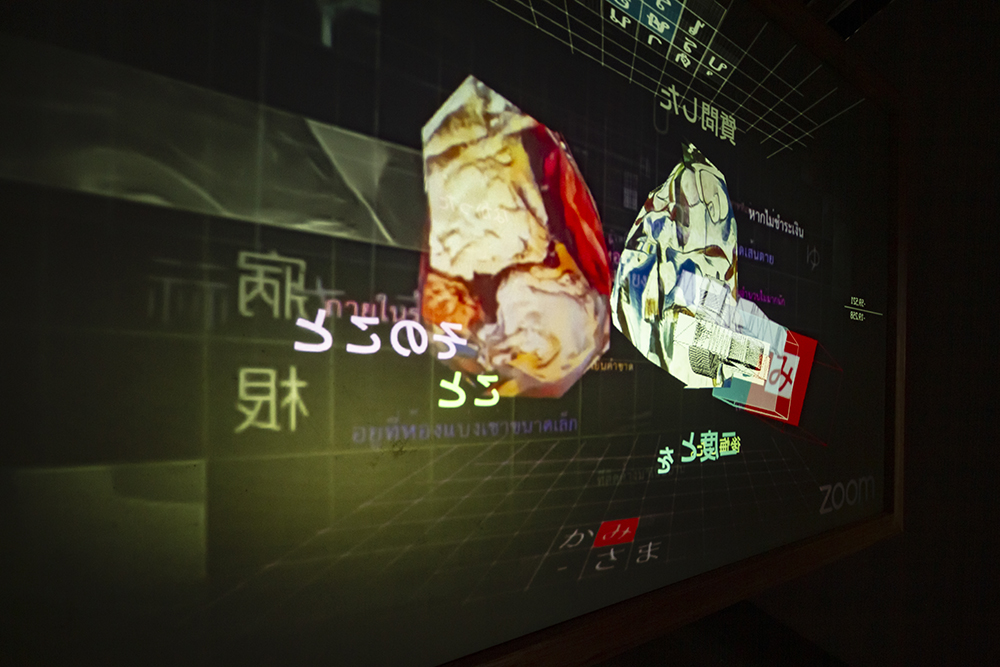
After the discussion about Cross-Words’ plan with the great assistant team in Nakanojo, the biennale office announced a call for participation in Cross-Words project and recruited a group of volunteers who lives in Nakanojo. In the first stage of collaboration, the artist and volunteers were committed to sending each other 20 words or phrases and some photos. Next, each of them would interpret the words and photos received, then wrote a short story in their own language inspired by those materials. The writings were expected to be around 4-5 pages. Once short stories were completed, the Thai short fictional document was sent to Nakanojo and the Japanese one was sent to Chiang Mai. The artist and volunteers were then asked to create 7 illustrations for each short story.
When the short stories and illustrations were finished, all materials which are the outcomes of sequential cooperation of the artist and local people in Nakanojo, were collected and kept on the artist’s side. In the following stage, Chansataboot extracted some alphabets from Thai and Japanese words exchanged between the artist and participant in the very first stage and used them in computer programming process. Employing Marker-Based Augmented Reality (AR) technology, the alphabets were transformed into a series of AR markers, and presented in a form of moving image in a monitor embedded in “Cross-Words’ Board”, a wooden structure which looks like a table. Each AR marker would trigger different abstract three-dimensional forms wrapped around with textures from illustrations. The wiggling digital abstract sculptures are seen as motion graphic on a surface of projection screen made from semi-translucent material, stretched on a wooden frame which the artist named it, “Fusion Plane”. Different messages excerpted from short stories and other graphical elements triggered by AR markers also appeared in the images’ background.

images from IP cameras installed in Gallery Seescape, Chiang Mai (left) and classroom 1-4, Isamamura, Nakanojo (right)

During the exhibition period, image signal triggered by AR markers in one place (Gallery Seescape in Chiang Mai or Nakanojo exhibition space) was projected onto “Fusion Plane” within the space, as well as sent to exhibition room in another country simultaneously via live video streaming service. The unique characteristic of semi-translucent screen allows 2 video images to be projected onto from both sides. This means the audiences both in Thailand and Japan would see the same fusion of 2 images generated in different venues on the projection screens at the same moment. This mechanism of generating and sending images signal between two countries was a real-time communication.
Though “Cross-Words” utilizes digital apparatus as the main tool in the creation process, it might be true to say that the creation process of “Cross-Words” could be compared to sowing some seeds which originated in one place, into another strange ground in a foreign territory. Allowing them flourish freely in unfamiliar natural, social and cultural environment, might sometimes lead to a delightful conclusion.
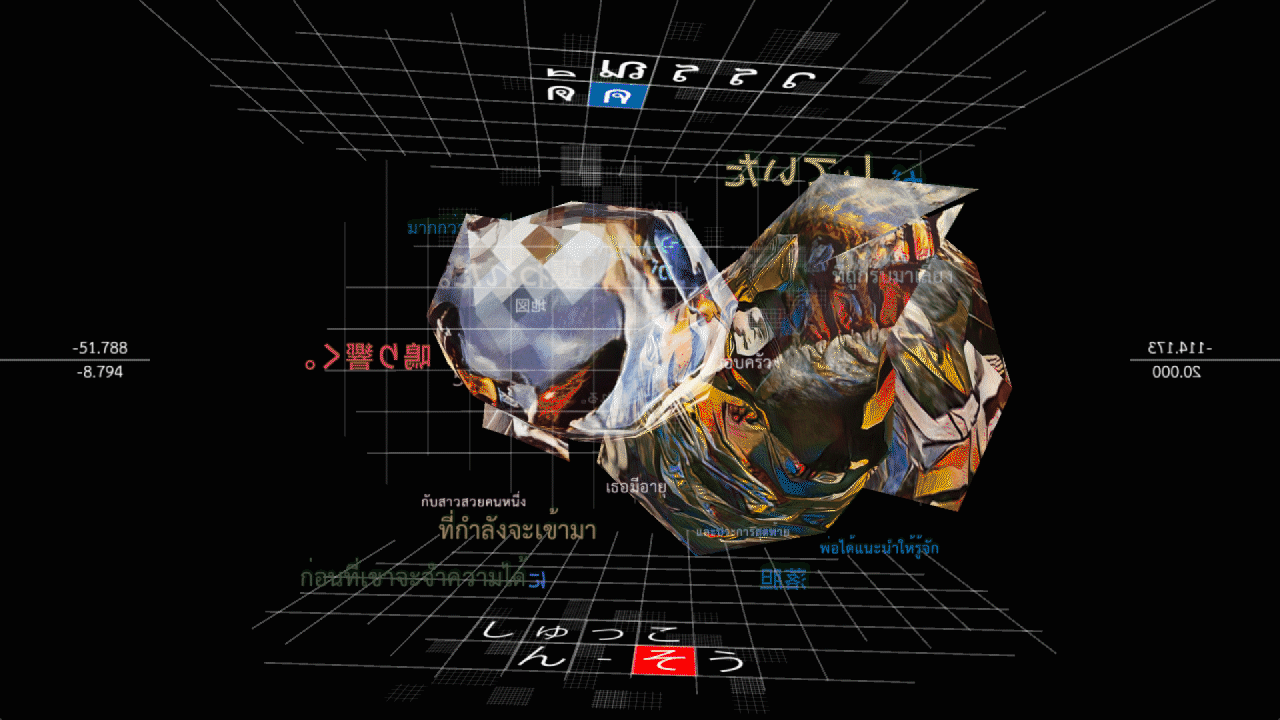

An excerpt from “Words Across Lines”, an article about “Cross-Words”, written by Sebastien Tayac, the curator of Gallery Seescape :
“…Reflected in the selection and exchange of words and images from Thailand and Japan and in the many elements of his creative process that decontextualize and recontextualize, Wuttin embodies the concept of deterritorialization/reterritorialization as developed by Gilles Deleuze (1925–1995) and Félix Guattari (1930–1992). Another relevant element seems to confirm this theory: the place given to language and its meaning…”
To read the full text, please click >> HERE

Process and Installation Diagrams :
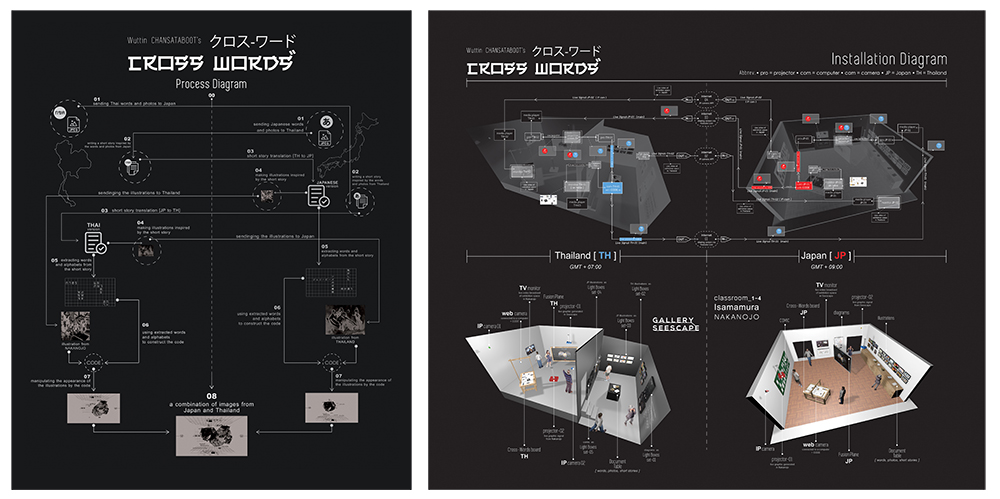
• To see Hi-res version of “Process Diagram” (left), please click >> HERE
• To see Hi-res version of “Installation Diagram” (right) , please click >> HERE

Process Breakdown Animation :

Cross-Words in Thailand (Gallery Seescape, Chiang Mai) :
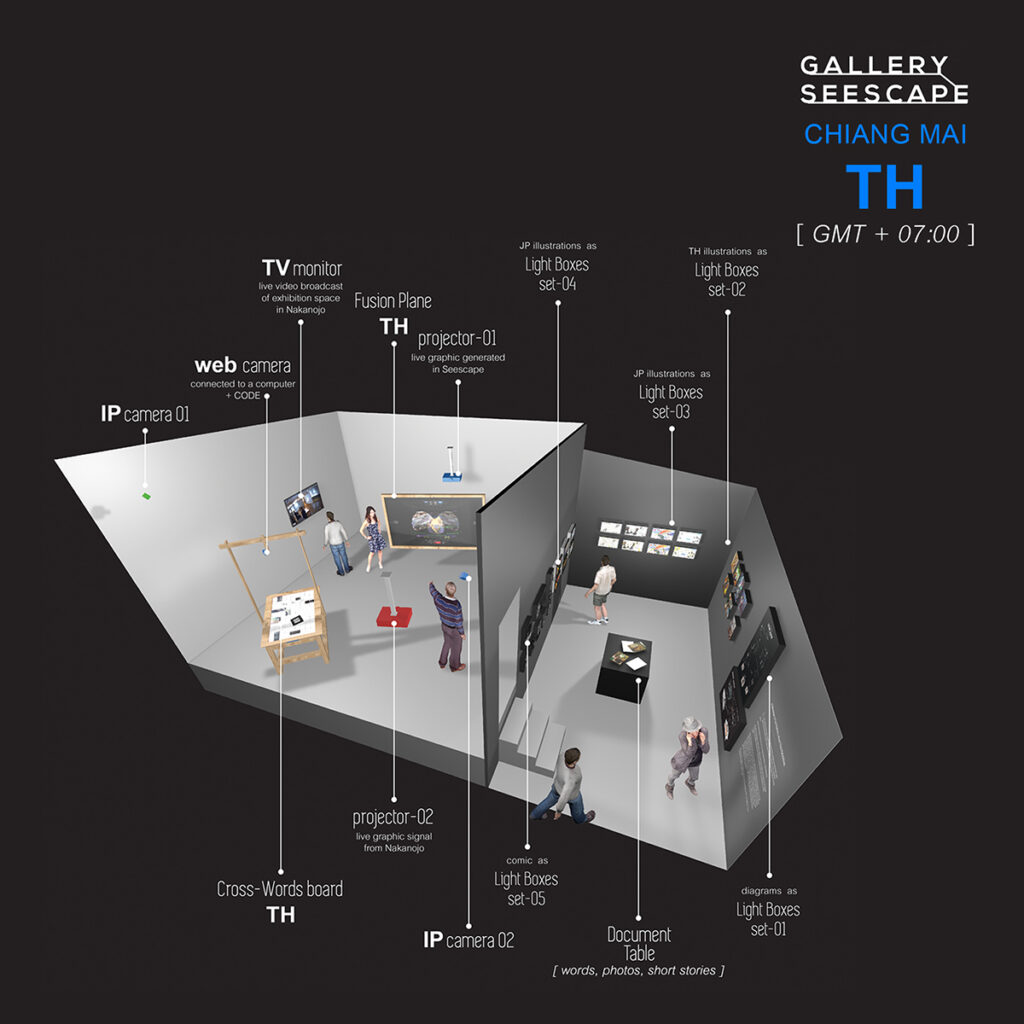


Installation View in the Dark Room :

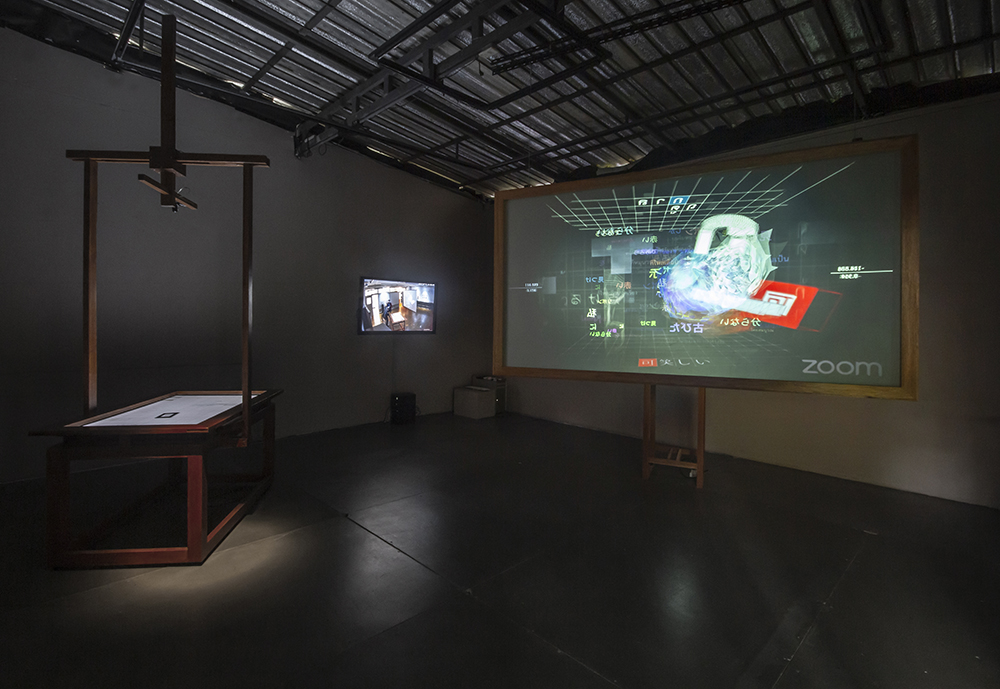

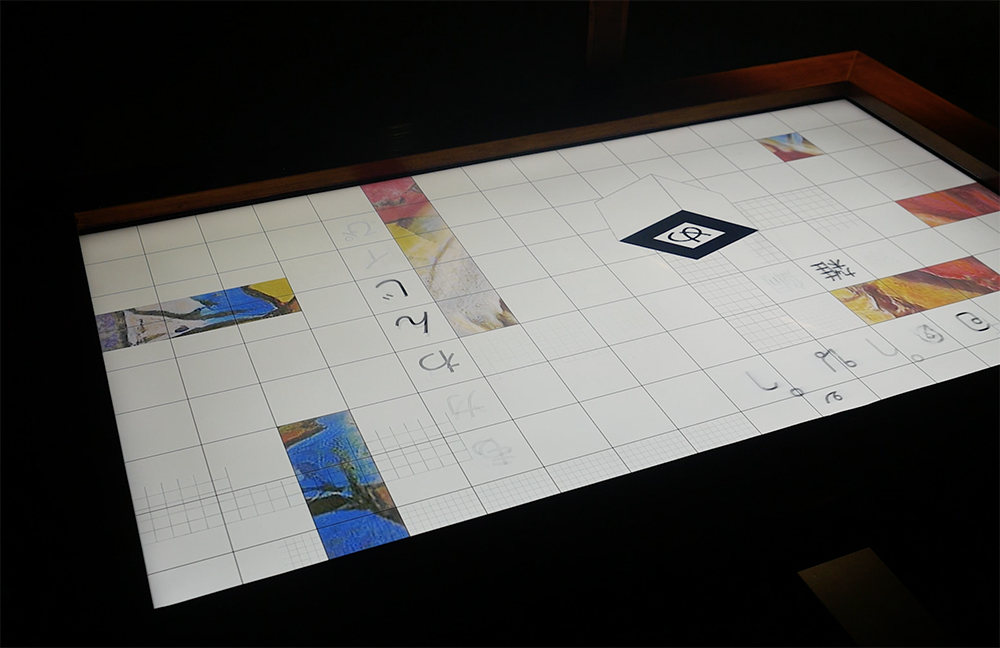

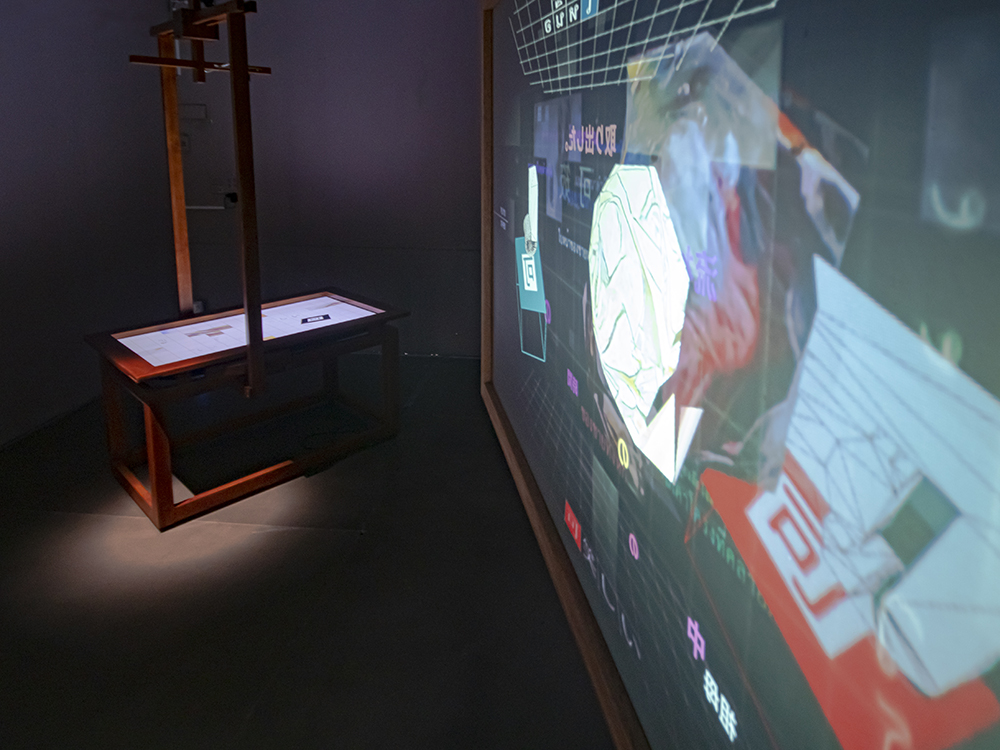

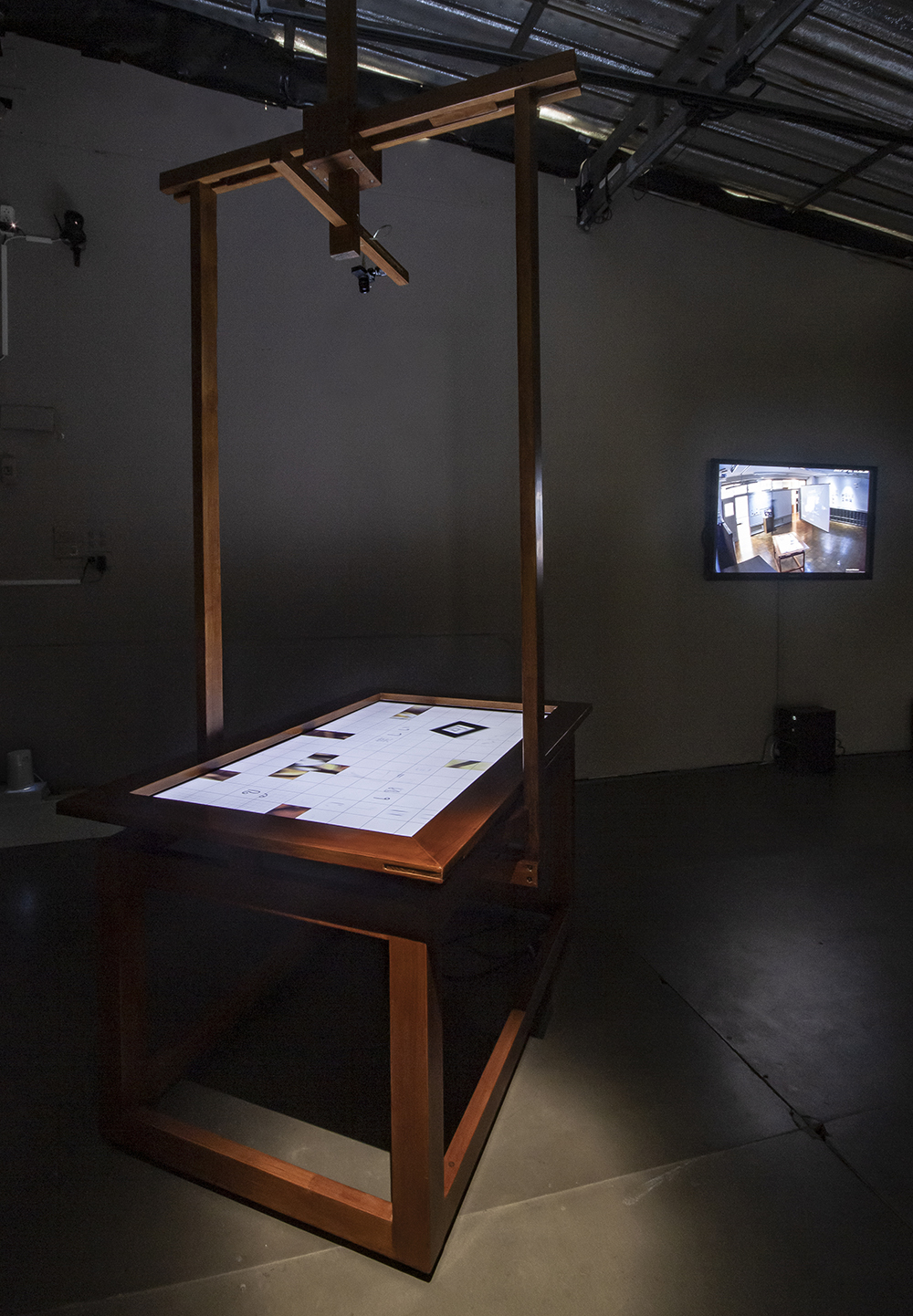



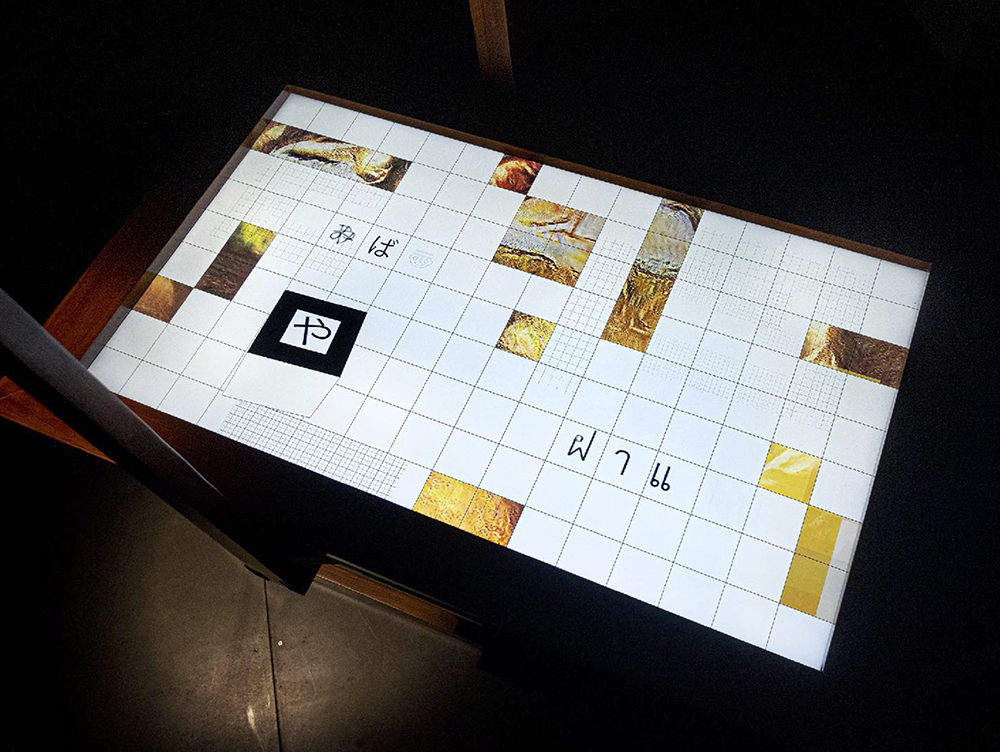


Installation View in the Light Boxes Room :

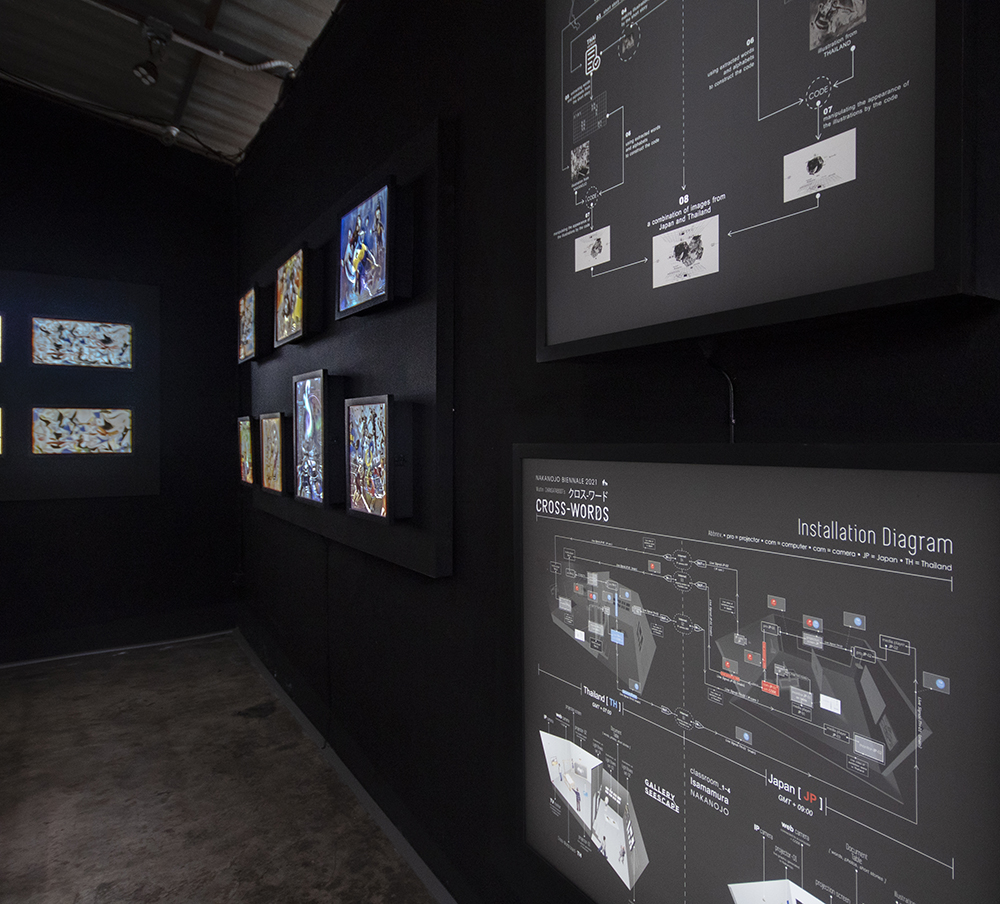





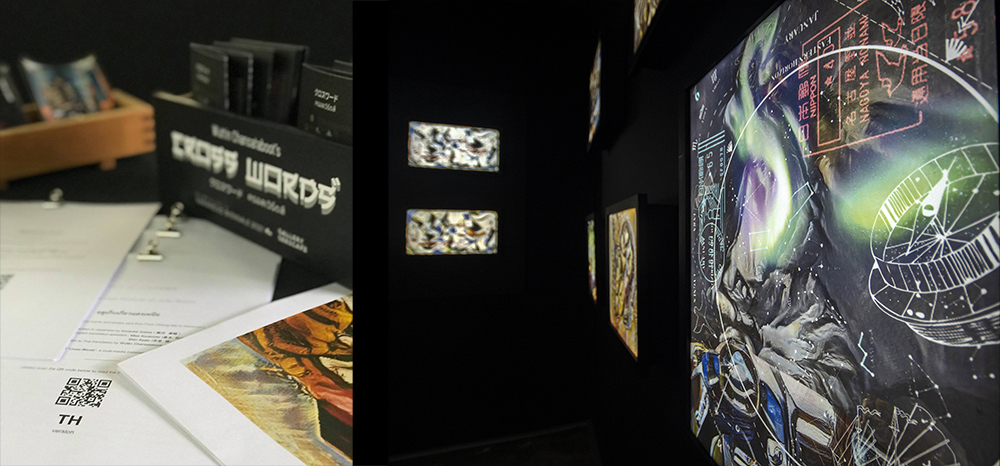





Cross-Words in Japan (classroom 1-4, Isamamura) :
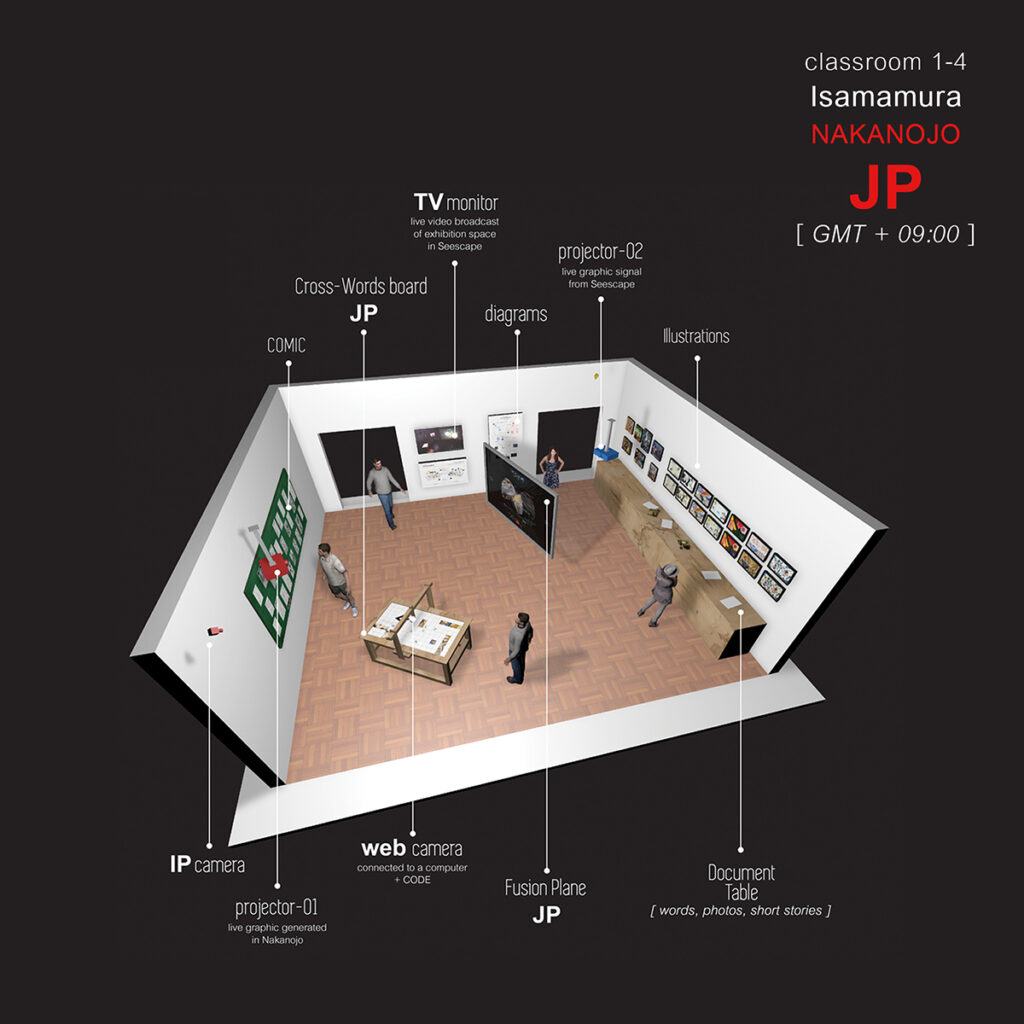

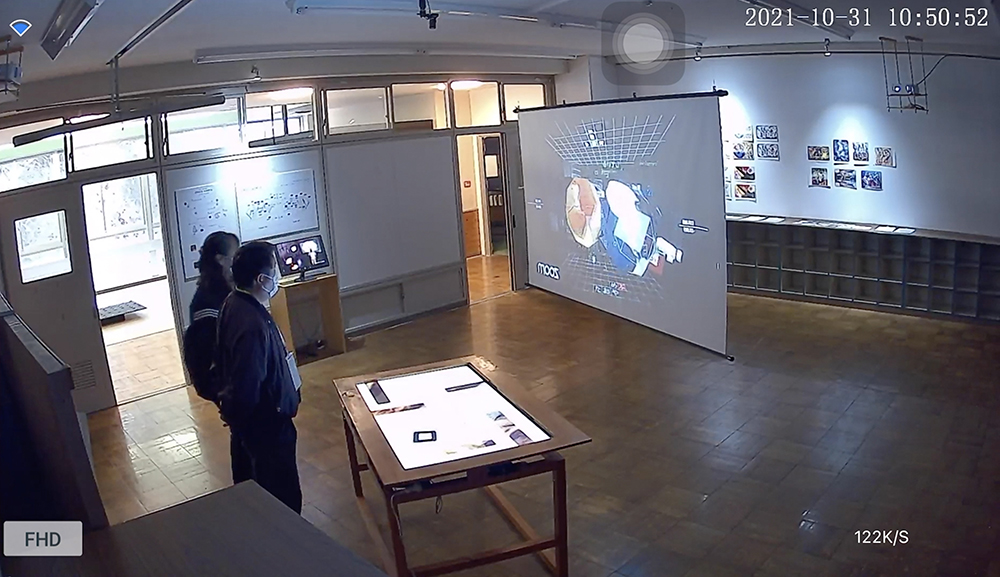
image from IP camera installed in classroom 1-4, Isamamura, Nakanojo.

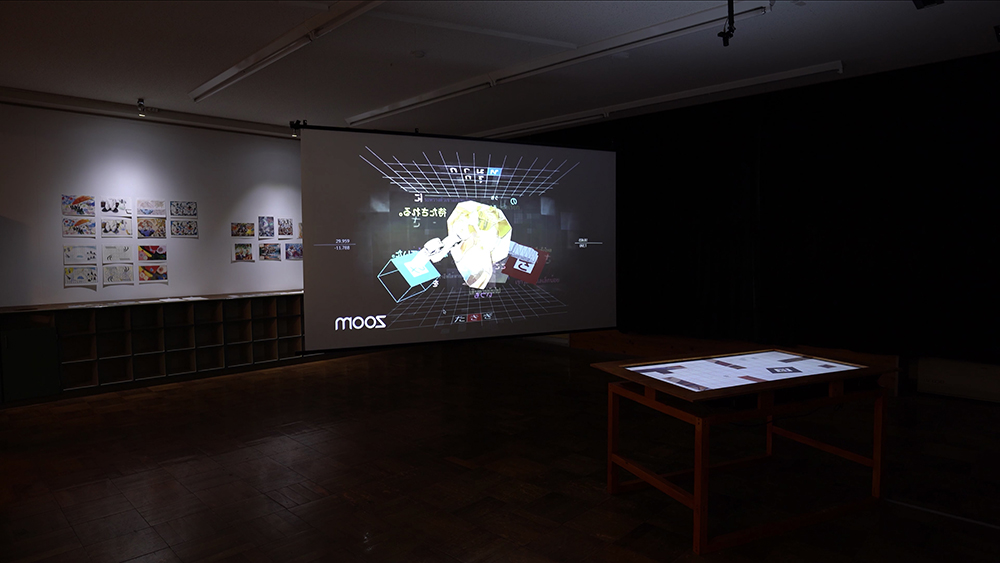
a still image from documentation video of Cross-Words in Nakanojo (please see the full video below)


Documentation video of the installation in Nakanojo :



IP Cameras Communication and Droste Effect :
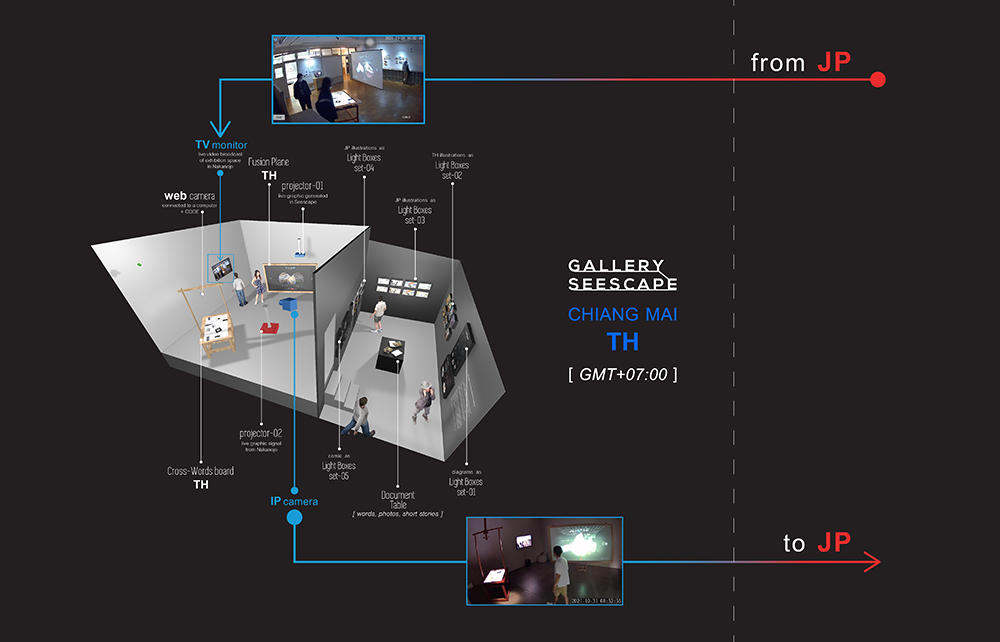

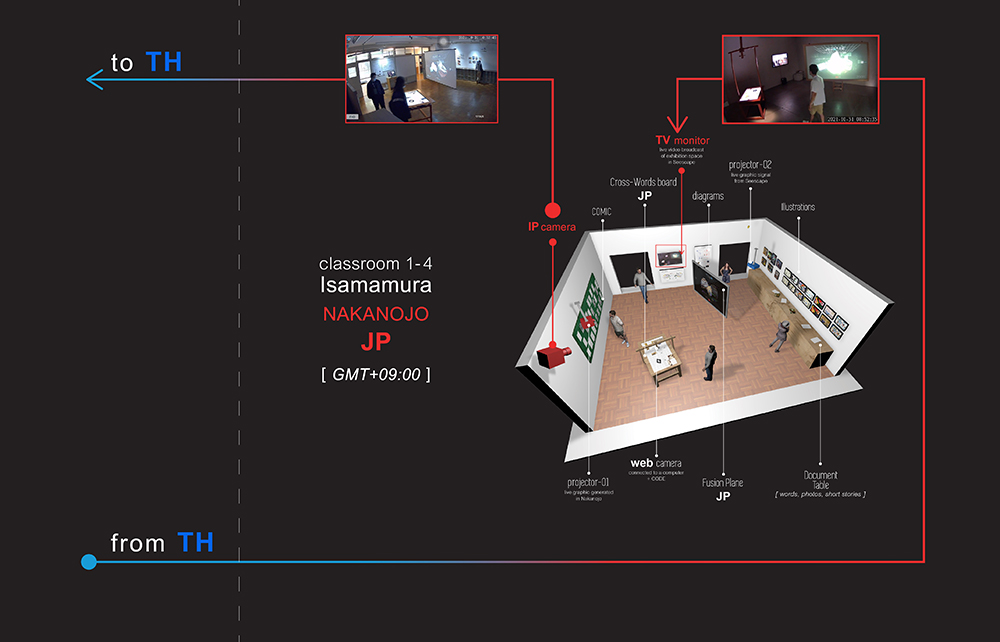

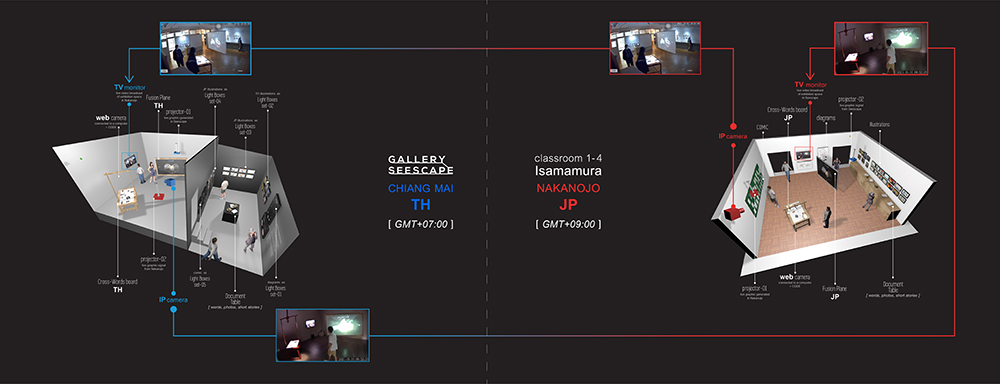

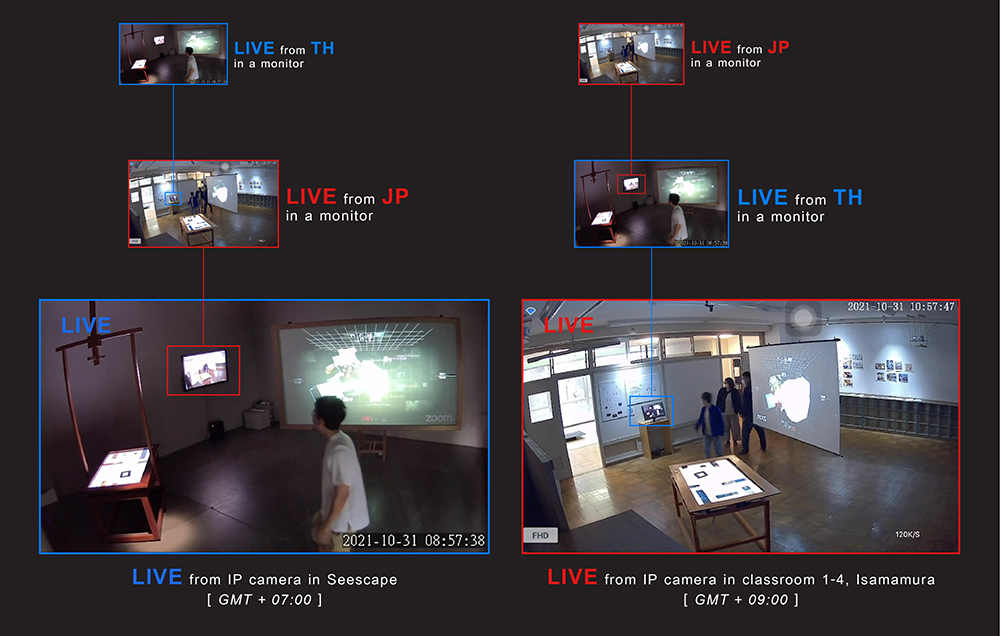


Process Breakdown (Step-by-Step with Participants Credits) :

STEP-01 :
Words and Photos Exchange.
• Japanese words and photos selected by : Hajime Nakazawa • 中沢
• Thai words and photos selected by : Wuttin Chansataboot
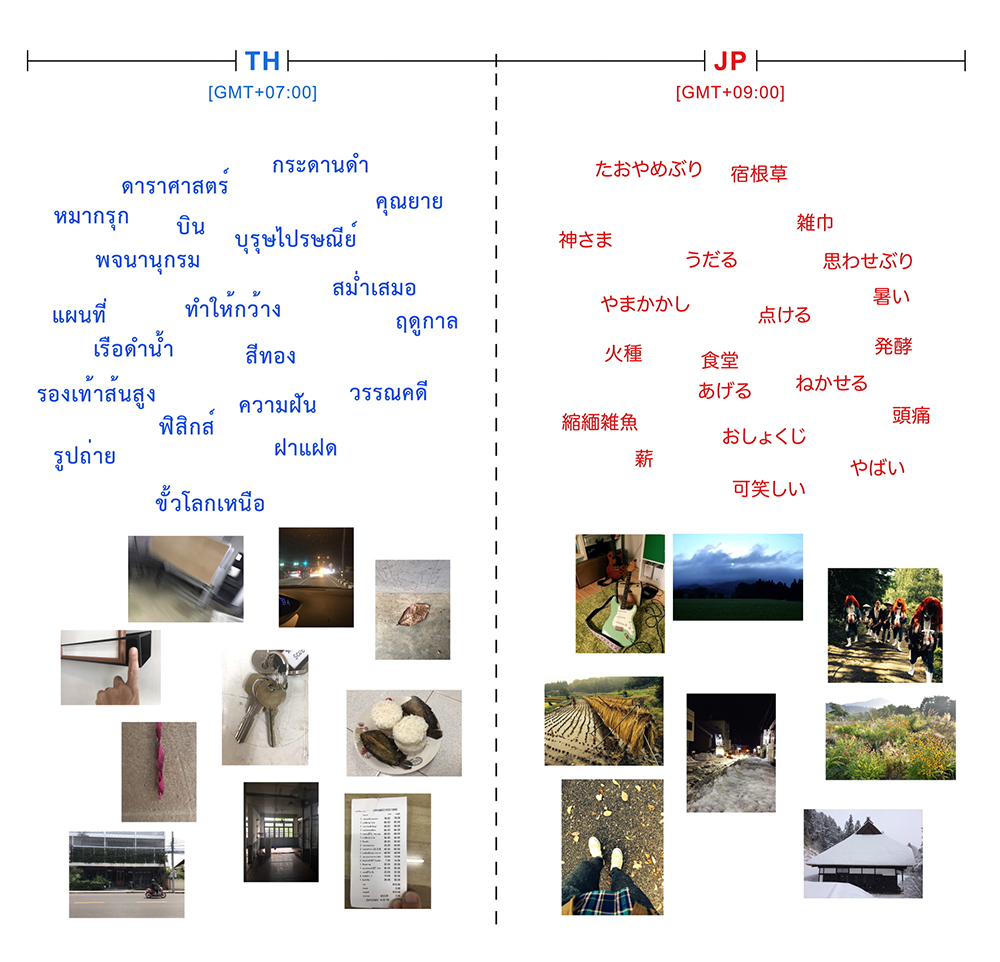

STEP-02 :
Writing Short Stories inspired by Words and Photos received.
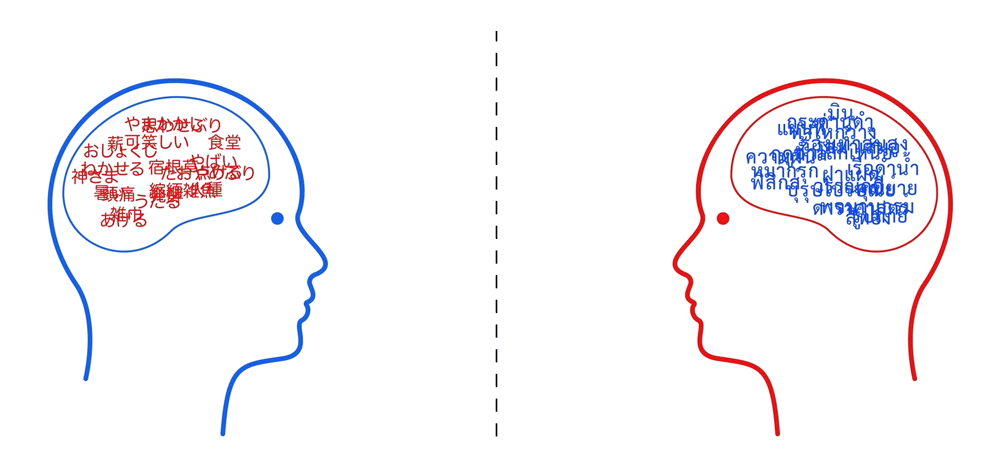

• ” ジェリービーンズの収穫祭 ” [ The Harvest Festival of Jelly Beans • ฤดูเก็บเกี่ยวแสงเหนือ ] originally written in Japanese by : Kohsuke Iizawa • 飯沢 康輔
To read original version in Japanese, please click >> HERE

• “Beyond the Dome” [ ドームを超えて ] originally written in Thai by : Wuttin Chansataboot
To read original version in Thai, please click >> HERE

STEP-03 :
Short Stories Translation.
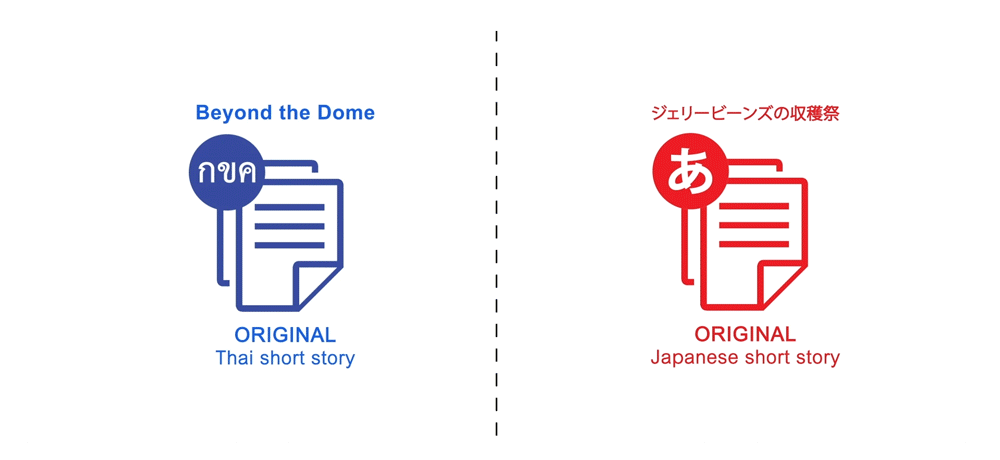

• Thai to Japanese translation by : Daichi Sinohara • 篠原 大地
To read “Beyond the Dome” in Japanese version, please click >> HERE

• Japanese to English translation assistant : Misa Kuramoto • 倉本 弥沙 and Shin Asato • 安里 槙
To read ” ジェリービーンズの収穫祭 ” [ The Harvest Festival of Jelly Beans • ฤดูเก็บเกี่ยวแสงเหนือ ] in English version, please click >> HERE
• English to Thai translation by : Wuttin Chansataboot
To read ” ジェリービーンズの収穫祭 ” [ The Harvest Festival of Jelly Beans • ฤดูเก็บเกี่ยวแสงเหนือ ] in Thai version, please click >> HERE

STEP-04 :
Making Illustrations inspired by Short Stories.
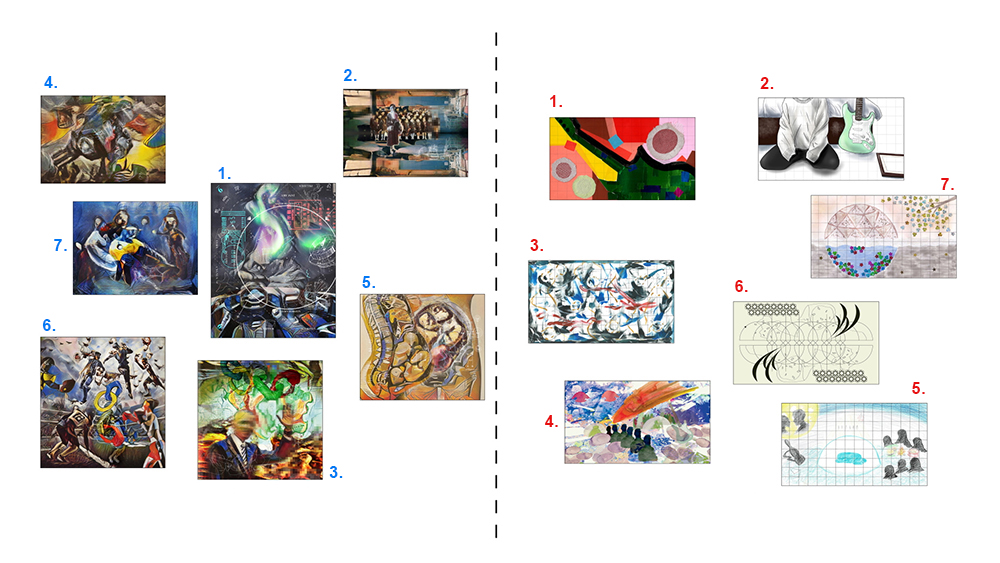

Illustrations made in Nakanojo, JAPAN :
- “My Precious”___Akiko Shimamura • 島村 明子
- “A Young Man and His Belongings”___Chiaki Tomioka • 冨岡 千晶
- “A Strange Stormy Day”___Nachi Kawahori • 川掘 奈知
- “Seven Suspicious Guys Concealed in Black and the Meteorite”___Tamami Yamazaki • 山崎 珠美
- “Dreaming in the Dome”___Makiko Wada • 和田 真樹子
- “Diagram of the Domes”___Sawara • 鰆
- “Virtuality and Reality”___Kumi Asahina • 朝比奈 くみ
please click >> HERE to see all illustrations in high resolution

Illustrations made in Chiang Mai, THAILAND :
- “Aurora Borealis at the Border of N and G”
- “Young Grandma and Her Students”
- “Thunberg, the President”
- “You are being watched”
- “Inside Naomi T.”
- “The Resurrection of the Olympics”
- “The Unhappiest Couple and a Submarine”
• All illustrations by Wuttin Chansataboot •
please click >> HERE to see all illustrations in high resolution

STEP-05 :
Extracting Alphabets for AR Markers.


STEP-06 :
Codes Construction.
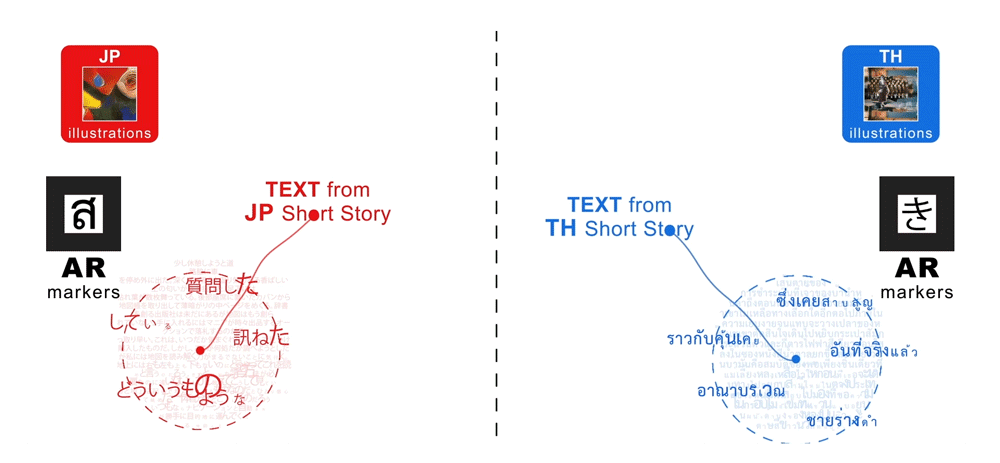

STEP-07 :
Conducting Images with AR Markers embedded in the Videos shown on Cross-Words’ Boards.
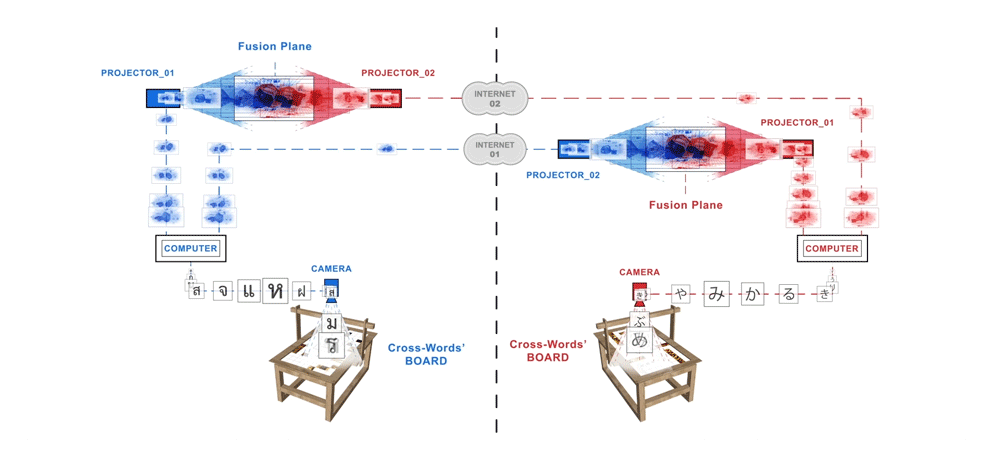

STEP-08 :
Fusing Images on Fusion Planes.
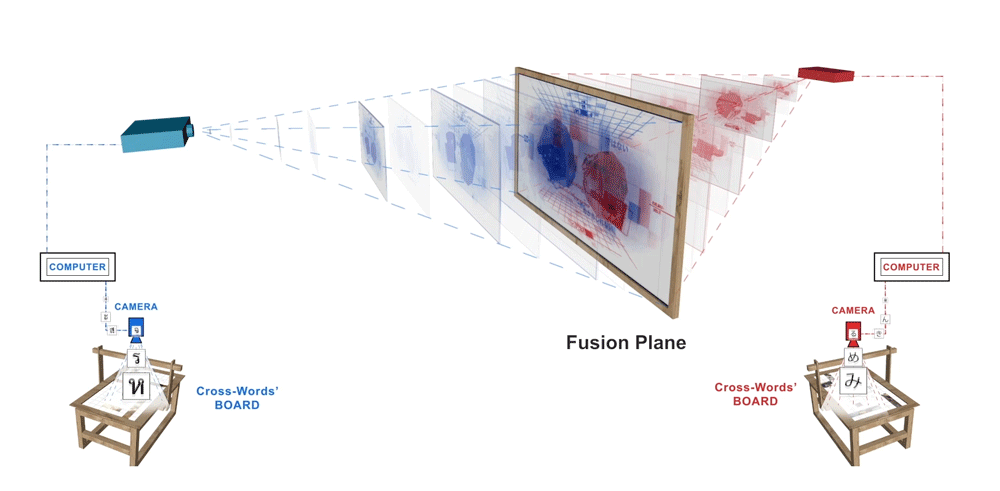

Cross-Words’ Comic
( by Nattadej Siwawut )
Comic art inspired by ” ジェリービーンズの収穫祭 ” [ The Harvest Festival of Jelly Beans • ฤดูเก็บเกี่ยวแสงเหนือ ]
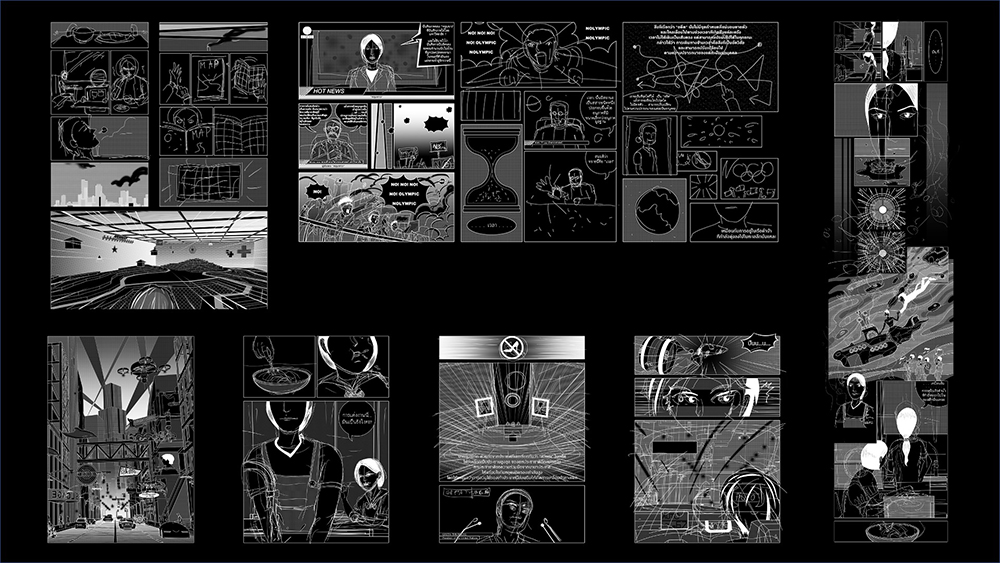

Early experiment with alphabets as AR markers :


